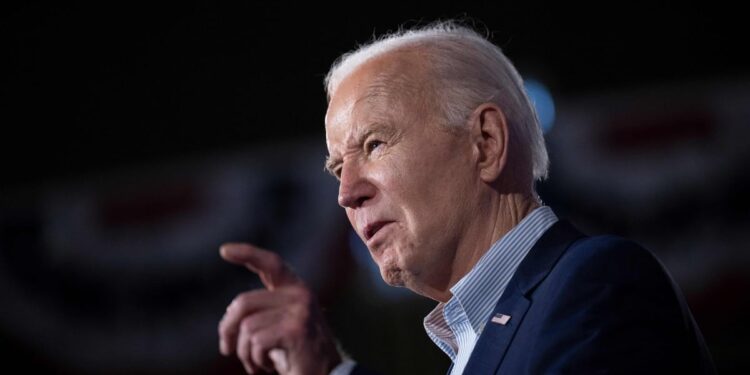Joe Biden, seeking a second term, is campaigning Tuesday in Nevada and Arizona, two states which will certainly be decisive during his face-to-face in November with Donald Trump.
In these western lands where the proportion of Hispanic inhabitants continues to grow, the American president must stem the erosion of his popularity with a historically Democratic electorate, but increasingly seduced by his Republican rival.
“This guy despises Hispanics. I understand Hispanic values,” Joe Biden assured about his rival, in an interview with Univision, a large network of Spanish-language television channels.
“Hispanic voters were essential to my election in 2020, and they are again, we are working hard to earn their votes,” he added.
Thanks to bountiful campaign funds, the 81-year-old Democrat’s team recruits and mobilizes as much as it can in these two “swing states”, the name given to American states which lean to one side or the other. during the presidential election, often within a few tens of thousands of votes.
It also launched a Spanish-language television advertising campaign.
Joe Biden presents himself as the candidate for job creation, the defender of the middle classes, and the guarantor of democracy and freedoms – in particular the right to abortion.
Immigration
The American president will also need to be able to score points on immigration, a particularly important subject in Arizona, a state bordering Mexico.
His strategy is complex. Joe Biden must counter the incessant accusations of laxity made by Donald Trump, who violently denounces the record arrivals of migrants at the Mexican border. But he must also spare the sensitivity of the progressive electorate and a good number of Hispanic voters, to whom he promised to approach the subject with “humanity”.
In Nevada, his first stop, Joe Biden should particularly emphasize his record and his housing projects.
In 2020, he had collected a little more than 33,500 votes ahead of Donald Trump, out of a total of around 1.3 million votes cast, thanks to his victory in the large cities where the population of this state is concentrated in majority desert, Reno and Las Vegas.
But his Republican rival had slightly improved his result in Nevada compared to 2016.
The Democrat, weighed down in the polls by his age and the high cost of living, has so far struggled to benefit politically from robust American growth.
After Nevada, Joe Biden will travel to Arizona on Tuesday evening, the scene in 2020 of one of the fiercest battles of the last presidential election.
CONTESTATION
The Democrat won this arid southwestern state, that of Monument Valley and the Grand Canyon, by just under 10,500 votes – out of a total of more than 3 million votes.
In 2016, Donald Trump won Arizona.
Joe Biden will begin by launching, from a Mexican restaurant in a predominantly Hispanic neighborhood in the city of Phoenix, an initiative called “Latinos for Biden”.
The Hispanic electorate, which according to some estimates will account for about a quarter of the votes in Arizona in November, perhaps holds one of the keys to the presidential election.
Donald Trump has never acknowledged his defeat in 2020, and the leadership of the Republican Party in Arizona has embraced the 77-year-old mogul’s conspiracy theories since Joe Biden’s narrow victory.
Enough to fuel concerns about strong tensions, even open violence, around next November’s election.



